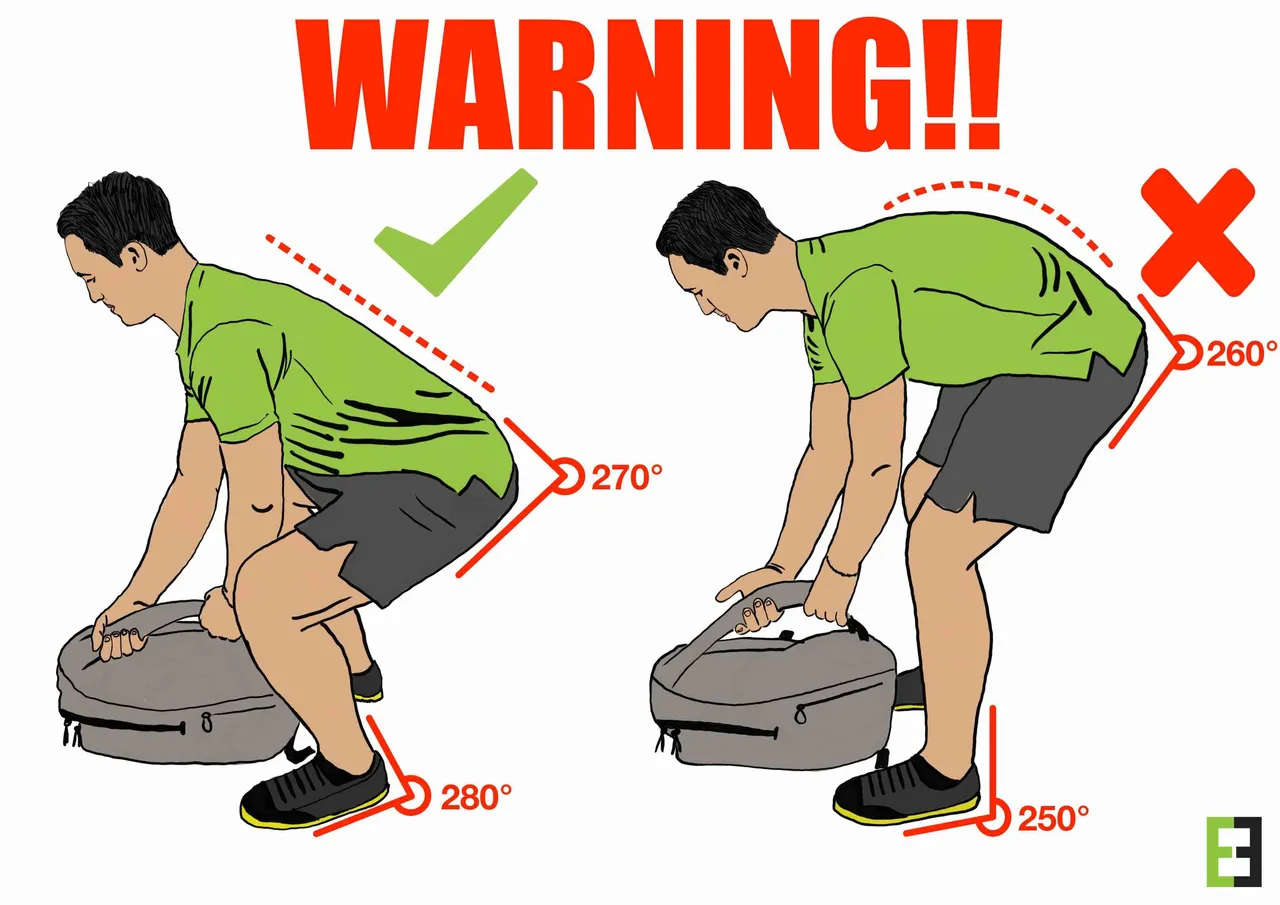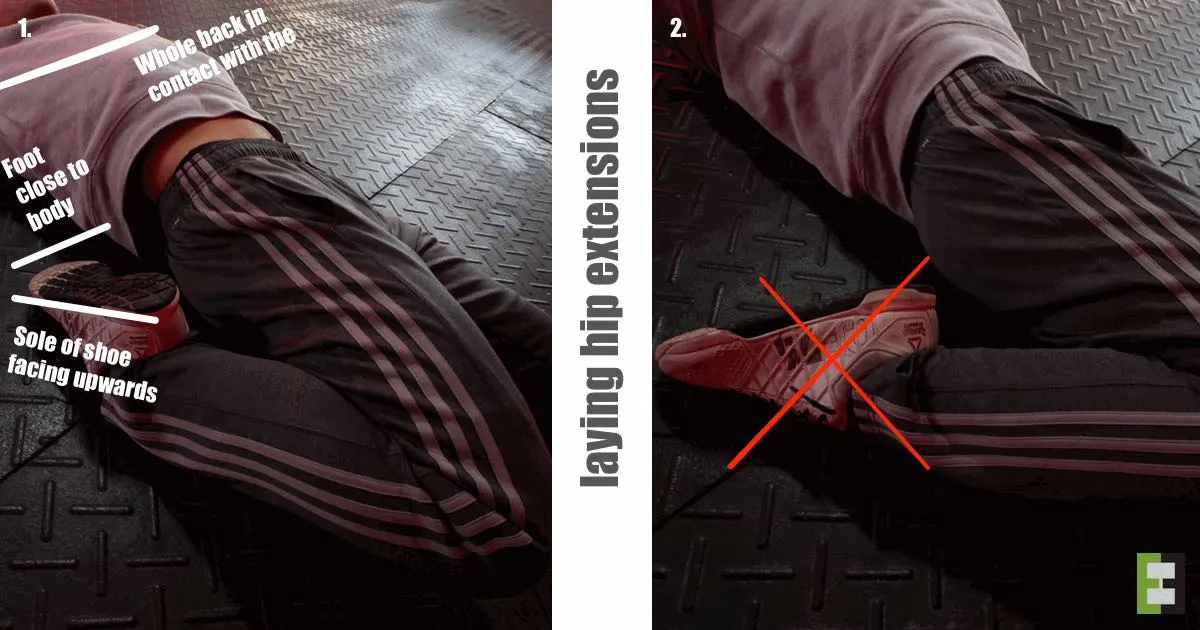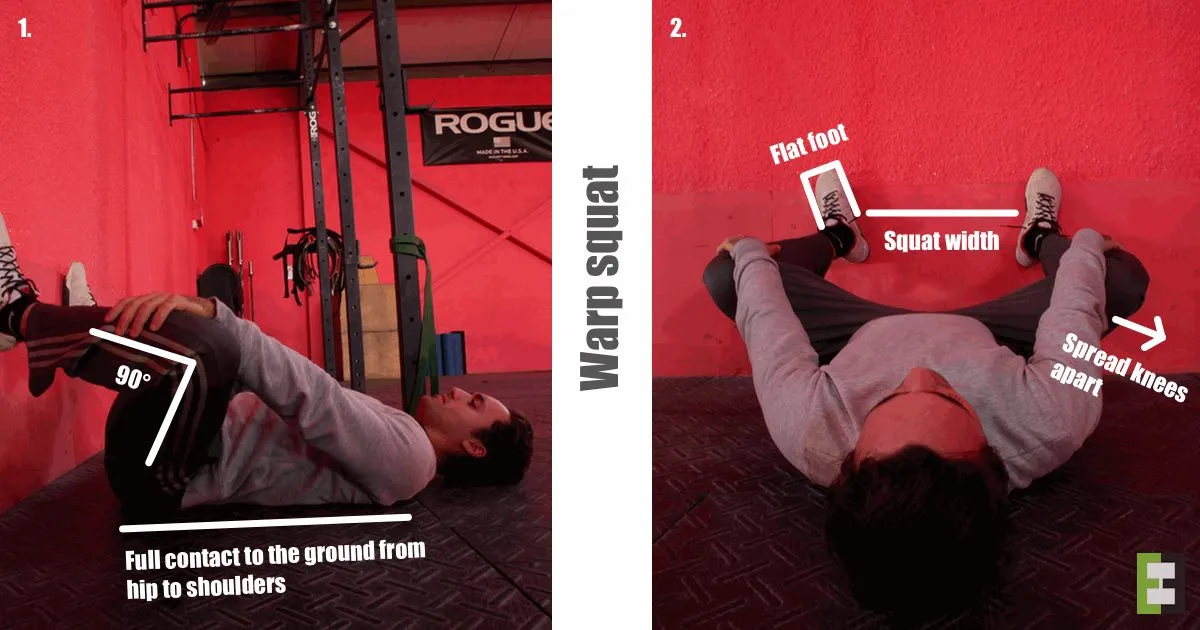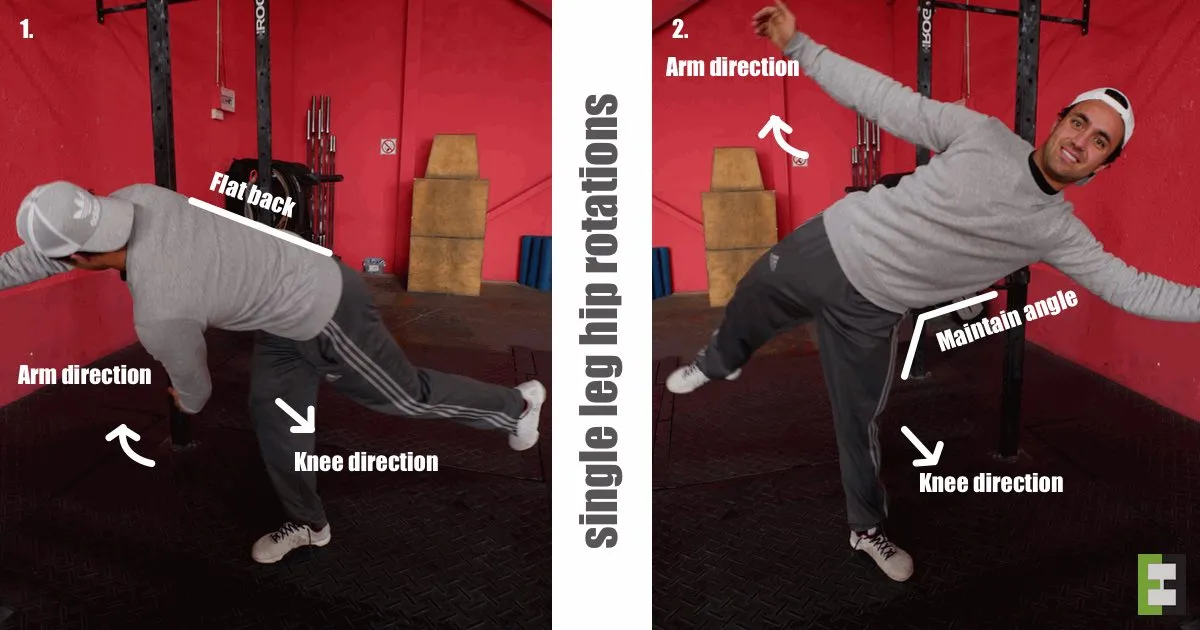
There is a misconception that the 'Deadlift Movement' is only performed by gym goers. The truth is that everyone is completing some form of the deadlift every day. Whether you are picking your kids, grocery packets or bed off the floor, you are mostly using a 'deadlift' style exercise to do so.
The body is designed to pick up objects safely and efficiently. Unfortunately, many of us don't know how to use our 'machines' very well. Improper movements over a long time ultimately lead to injury.
In this post, I will hone in on a typical issue attributing to inefficiencies while lifting objects from the ground.
The hunchback of...
Deadlifting with a rounded back is voodoo, it hurts your performance and puts your spine in a position that is likely to cause low back pain or even a herniated disk [1]!
One of the major issues contributing to a sub-optimal back position is the lack of mobility/flexibility in the hips [2].
The premise is that if your hips can't hinge correctly, the back will compensate by rounding over. The following three flexibility exercises will help restore essential function to your hips. These drills target the joints from all angles.
GHD Hinge hangs:
This drill targets the posterior (back) portion of the hip joint. The goal is to increase flexion (bending motion) in the hips. Learning how to keep a tight and flat back while lowering the body through the hips, is another valuable lesson here.

Set yourself up on the GHD machine so that your hips are well past the front edge of the padded leg support. This position will ensure that your hip joints unrestricted and are free to move. Lower your torso by hinging at your hips only! The back must remain straight and tight. Reach out with your hands and touch the floor. You should feel the tension in the back of the hip and hamstrings
Laying Hip Extensions:
The modern, western world promotes a sedentary lifestyle. The average American spends upwards of 7 hours a day seated [3]. Accumulating too much time in a flexed (closed) position tightens the hips in that shape. This 'stretch' is designed to unglue the front of the hip through extension.

Sit on one knee and heel, while your other leg extends. Shift position so that your bum moves off your heel and on the ground next to your foot. The sole of your shoe must face the ceiling, and all your toenails must be in contact with the ground. Lay down with your entire upper back in contact with the ground. If this position is too advanced, then rest on your elbows at first. Contract and relax the glutes to increase tension.
Warp squat:
Unless you are playing the leading role in 50 shades of gray, you are probably not stretching the groin much. Ironically, spreading the legs is useful in activating the butt (glute) muscles during movements like the deadlift and squat [2].

Imagine that a wall is a floor and set up as you usually would for a squat. Make sure to stay in contact with the ground from the hip to the head. All your toes, as well as heels, must touch the wall. Keep the angle of the knees at 90 degrees or less while maintaining the hips on the ground. Spread your knees apart with assistance from your arms. You will feel the tension in the groin area.
Single Leg Hip Rotation
Tight muscular around the hips pull the joints out of alignment. By standing on one leg, the concentrated load forces everything back into alignment. The butt (glute) muscles activate by rotating the upper body. Using the glutes for power movements minimises strain on the lower back [1].
Stand on one leg and bend over at the hips, while maintaining a flat back (squeezing the abs helps) and bent knee. Take the alternate arm and reach across the body, by rotating the hips. The knee must resist the motion to ensure that the hips do all the work. Now squeeze the butt muscle of the standing leg, to rotate the torso (upper body) in the opposite direction. The knee must, yet again, resist motion in the opposite direction to the torso. Continue rotating until you feel the muscles warming up. Sometimes the hips 'click' or 'pop' into place after a few repetitions, which is a sign that they have aligned.
Posterior Flossing:
Rubber bands are instrumental in sport and rehabilitation as they apply resistance to the exact area you choose in any direction.
In this case, the band assists the hips in flexing, while the back remains straight and stable. This motor pattern carries over very well to the deadlift. The accommodating resistance also makes the engine (glute muscles) rev up, in preparation for picking up heavy objects.

Place the band in the crease of one of your hip joints, then take a step forward to add resistance. Keep the 'banded' leg slightly bent and locked it in place. The knee should hold its angle throughout the drill. Send the hips back into flexion, then drive them forward into extension, while always maintaining a fixed and tight core Complete 15 repetitions on each leg.
If you like this series, please let me know in the comments below. Which movement should I review next? I am accepting recommendations.
Follow me @exercisinghealth
Sources:
[1] The Ultimate Back Performance- Dr. Stuart Mcgill
[2] Becoming a Supple Leopard 2nd edition: Dr. Kelly Starrett
[3] https://academic.oup.com/aje/article/167/7/875/84501
*All pictures were created by @exercisinghealth